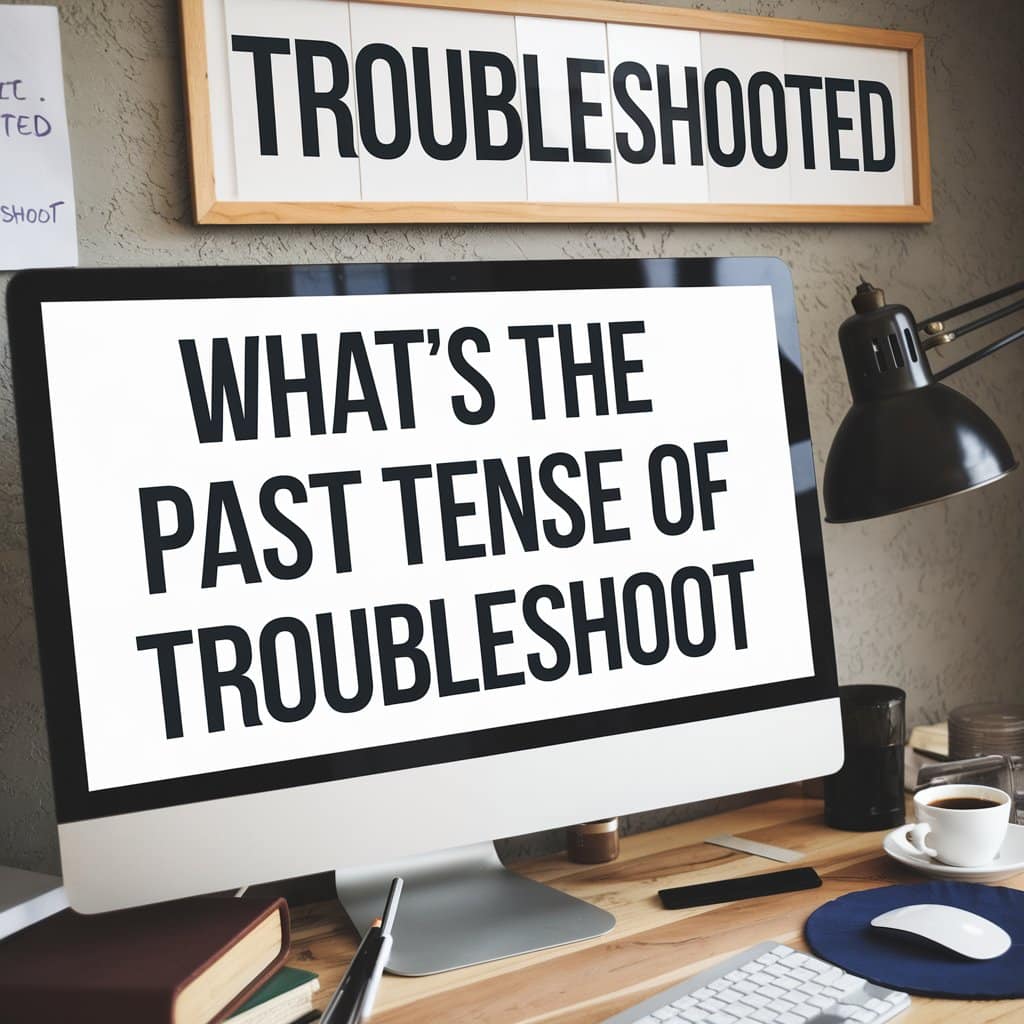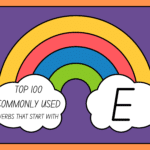In today’s fast-paced, tech-driven world, troubleshooting is a term we use almost daily. From IT professionals to everyday users, solving problems with software, hardware, or gadgets often involves some level of troubleshooting. But, when it comes to describing these actions in the past, people often stumble upon an important linguistic question: What’s the past tense of troubleshoot? Is it “troubleshot” or “troubleshooted”?
The confusion is real, and this blog post will clarify the correct usage and provide comprehensive details to ensure you’re never caught off guard again.
Understanding the Verb: What Does Troubleshoot Mean?
Before diving into the troubleshoot past tense, it’s crucial to first understand what “troubleshoot” means. The verb “troubleshoot” refers to the process of diagnosing and solving problems, particularly in technical contexts. It’s most commonly associated with IT and engineering, but it can apply to any situation where problem-solving is needed.
Definition of Troubleshoot:
- Troubleshoot: To identify and solve problems, especially technical issues.
- Example: “I need to troubleshoot this software glitch before the deadline.”
This compound verb combines “trouble” and “shoot,” which may be why its conjugation can confuse people. The term has become widespread in the tech industry, where troubleshooting is a crucial skill for professionals who resolve computer or system errors. But, how does this compound verb transform when used in the past?
Past Tense of Troubleshoot: Is It “Troubleshot” or “Troubleshooted”?

The Correct Answer: Troubleshot
The past tense of troubleshoot is troubleshot. Yes, “troubleshot” might sound a bit odd at first, but it’s the correct form according to traditional English grammar rules.
Read more : Backward or Backwards: Which is Correct?
Why “Troubleshot” Is Correct:
“Troubleshoot” follows the pattern of irregular verbs like “shoot,” where the past tense doesn’t add the regular “-ed” ending but changes form entirely.
| Verb | Past Tense |
| shoot | shot |
| troubleshoot | troubleshot |
| broadcast | broadcast |
| cut | cut |
| rewind | rewound |
Irregular verbs like “shoot” and “cut” are tricky because they don’t follow the common “-ed” rule that most English verbs use for their past forms. The word “troubleshoot” inherits this irregular pattern from the root verb “shoot,” making its past tense troubleshot.
Examples Using Troubleshot in Sentences:
- Correct: “Yesterday, I troubleshot the internet connection for hours.”
- Incorrect: “Yesterday, I troubleshooted the internet connection for hours.”
Common Mistakes: Why Do People Say “Troubleshooted”?
Despite troubleshot being correct, many people find themselves saying “troubleshooted” by mistake. This happens because English speakers often over-regularize verbs, applying the common “-ed” ending to make past tense forms. This makes sense with most verbs but not with irregular ones like “troubleshoot.”
Overregularization of Irregular Verbs:
Overregularization occurs when people incorrectly apply regular grammatical rules to irregular verbs. For instance, while the past tense of troubleshoot is “troubleshot,” many instinctively think it should be “troubleshooted” because the majority of verbs in English follow that pattern.
Similarly, some might ask:
- Is troubleshooted a word? No, it’s not recognized as a correct form.
- Troubleshooted vs troubleshot: Only “troubleshot” is correct.
Other Examples of Irregular Verbs People Often Overregularize:
- Broadcast: Many say “broadcasted,” but the correct past tense is simply “broadcast.”
- Rewind: The past tense is “rewound,” not “rewinded.”
Using Troubleshot in Action: Real-Life Examples
Let’s take a look at some practical examples to solidify our understanding of troubleshooting past tense:
Example 1:
- Scenario: You’re working in IT and had to fix a networking issue yesterday.
- Correct: “I troubleshot the server problem last night.”
- Incorrect: “I troubleshooted the server problem last night.”
Example 2:
- Scenario: You helped a friend solve a Wi-Fi issue.
- Correct: “We troubleshot the Wi-Fi issue together.”
- Incorrect: “We troubleshooted the Wi-Fi issue together.”
These examples clearly show how “troubleshot” works perfectly to describe troubleshoot in past tense. By practicing the correct usage, you’ll avoid making the common mistake of saying “troubleshooted.”
You may also like : Lead or LEED: When to Use Which One?
Troubleshooting the Confusion: When and How to Use Troubleshot
When to Use Troubleshot:
The simple rule is that you use “troubleshot” when referring to any past tense of troubleshooting. If the action of solving problems has already occurred, troubleshot is the word to go with.
| Context | Present Tense | Past Tense |
| Fixing a tech issue now | I troubleshoot | I troubleshot |
| Working on a bug yesterday | I troubleshoot bugs | I troubleshot bugs |
| Diagnosing a problem before | I troubleshoot systems | I troubleshot systems |
Troubleshoot or Troubleshooted?
Many people still ask: “What is the past tense of troubleshoot?” The answer is clear— troubleshot. It’s easy to see why the “-ed” form sounds natural, but troubleshooted or troubleshoot is simply incorrect.
Mastering Verb Conjugation: Troubleshoot and Similar Irregular Verbs
Understanding how to use “troubleshot” can be easier once you recognize patterns among other irregular verbs. Here are a few verbs that work similarly:
| Verb | Present Tense | Past Tense | Present Participle |
| shoot | shoot | shot | shooting |
| rewind | rewind | rewound | rewinding |
| broadcast | broadcast | broadcast | broadcasting |
| cut | cut | cut | cutting |
Just like past tense for troubleshoot, these verbs follow an irregular pattern where the past tense does not require an “-ed” ending. Recognizing these patterns can help you improve your command of irregular verbs and avoid common mistakes.
Other Irregular Verbs Like Troubleshoot
If you’ve mastered the past tense of troubleshoot, here are a few other tricky verbs you might want to keep in mind:
Verb List with Similar Patterns:
- Rewind: Past tense is “rewound” (not “rewinded”).
- Broadcast: Stays the same in both present and past forms (“broadcast”).
- Cut: Stays the same, just like “broadcast.”
These irregular verbs confuse many, just like “troubleshoot” does, but mastering these will elevate your grammar game.
Case Study: Using Troubleshot Correctly in Professional Writing
Scenario: An IT professional is writing a report after resolving issues in a company’s network. Here’s how the correct usage of troubleshot versus troubleshooted could impact their report:
- Incorrect: “We troubleshooted the issue with the router and restored internet access.”
- Here, “troubleshooted” comes off as unpolished and unprofessional.
- Correct: “We troubleshot the issue with the router and restored internet access.”
- Using troubleshot conveys competence and attention to detail.
This subtle difference can make a significant impact, especially in business and technical writing where precise language matters.
Must try this : Repetition vs Parallelism: What’s the Difference?
Conclusion: Troubleshot, and Now You Know
In conclusion, the past tense for troubleshoot is troubleshot, not troubleshooted. Although many people mistakenly use “troubleshooted,” understanding the irregular verb pattern will help you avoid this common error. Mastering the correct use of troubleshoot in past tense not only improves your grammar but also elevates your communication skills, whether you’re writing emails, reports, or speaking with clients.
To recap:
- The correct past tense of troubleshoot is troubleshot.
- Troubleshooted is incorrect, even though it might sound right to some.
- Irregular verbs like “shoot” (from which “troubleshoot” derives) follow unique patterns, and “troubleshot” fits this pattern.
By following these rules, you’ll confidently know when to use “troubleshot” and can avoid the confusion of troubleshooted vs troubleshot debates.

John David is an experienced blogger at Grammar Blend, passionate about language and communication. With a keen eye for grammar and clarity, he shares practical tips and tools to help readers improve their writing skills. His insightful articles make grammar accessible and engaging for learners of all levels.







